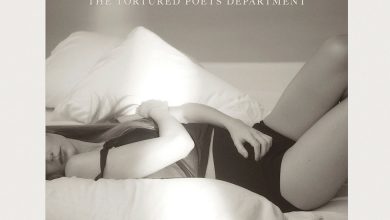Review: In Time for the Holidays, Radiant Praetorius Carols

The German hymn commonly known as “Lo, how a rose, e’re blooming” has long been a beloved Christmas carol. It’s sung by church choirs and high school choruses. Versions have been recorded by Linda Ronstadt and Sting.
But we have the early German Baroque composer Michael Praetorius to thank for the original single, so to speak: “Es ist ein Ros entsprungen.” The text and hymn melody were first printed together in 1599. But in 1609, Praetorius wrote a tender, four-part setting that plumbed the melody for all its harmonic possibilities, and became the equivalent in its day of a hit tune.
On Saturday, at St. Paul’s Lutheran Church in Manhattan, the splendid ensemble Tenet Vocal Artists performed, with 14 exquisite singers and 11 vibrant players of period instruments, a ravishing account of the beautifully direct yet intricate Praetorius version, part of a generous 75-minute concert of this composer’s works.
The program — while Jolle Greenleaf is Tenet’s artistic director, this one was led by Jeffrey Grossman, who played organ — honored the fact that this year marks both the 400th anniversary of Praetorius’s death and the 450th anniversary of his birth. (An on-demand video of the concert will be available for a month starting Tuesday at tenet.nyc.)
Praetorius was a leading figure of the German Lutheran chorale tradition — the practice of using hymn tunes as components of pieces that often unfold with striking complexity, as in the wondrous “Nun komm, der Heiden Heiland,” which Tenet performed compellingly. On one level this music comes across as a multi-section, chorale-like setting of an alluring melody. But just below the surface the music teems with inner details: flourishes of offbeat counterpoint for the voices, squiggling riffs for the instruments.
In the later phase of his career, Praetorius was increasingly influenced by new styles coming out of Italy, including the technique known as “cori spezzati,” in which groups of singers and players were divided into smaller ensembles so that phrases could be bounced back and forth.
In this regard Praetorius was indebted to a younger German contemporary, Heinrich Schütz, whom he got to know when they both worked in Dresden. Schütz had studied in Venice for three years with a progenitor of the technique: Giovanni Gabrieli, the composer and organist at St. Mark’s Basilica. In a nod to the Schütz’s influence, Tenet began the program with his “Jauchzet dem Herren,” in which mini-phrases are boldly echoed.
That Praetorius brought his own take to the technique was amply demonstrated with a performance of four fleet dances for instruments from his collection “Terpsichore,” his only surviving secular music. The interplay went beyond echo effects; sometimes a flourish was tossed from one group to another with an open invitation to elaborate on it. In several of the large-scale choral works, the Tenet singers enhanced the dramatic impact of the cori spezzati passages by positioning themselves well apart from one another in the church.
The revelation, for me, was a performance of the lengthy “Vater unser im Himmelreich,” from Praetorius’s 1619 collection “Polyhymnia Caduceatrix” — magnificent music, laid out in multiple sections, with sublime stretches of overlapping counterpoint and plush harmonies that cadence into radiant consonance. Historians point to this score as the German Baroque counterpart to Monteverdi’s seminal Vespers of 1610.
Yet some of the more modest fare was just as rewarding, like the setting of what’s familiar today as the carol “Joseph Dearest, Joseph Mine.” How often do you get to hear Praetorius’s subtly ingenious and glowing version?
Tenet Vocal Artists
Performed on Saturday at St. Paul’s Lutheran Church, Manhattan.



